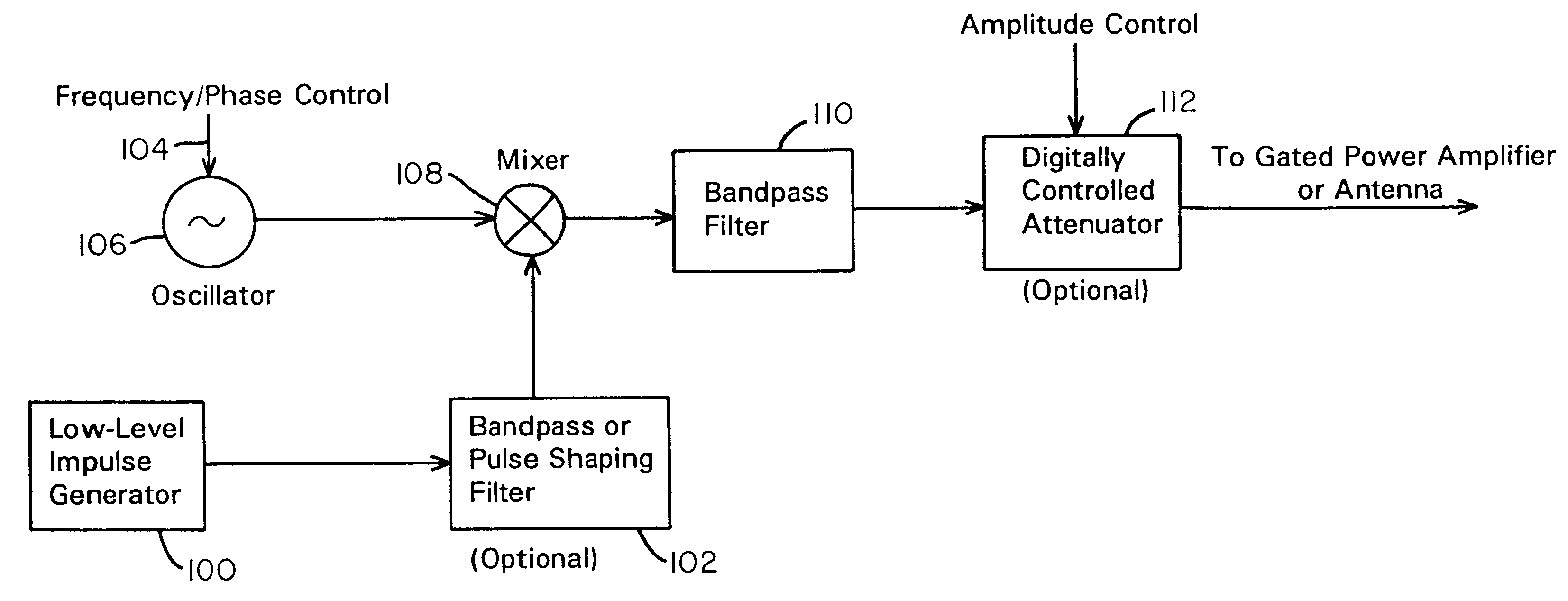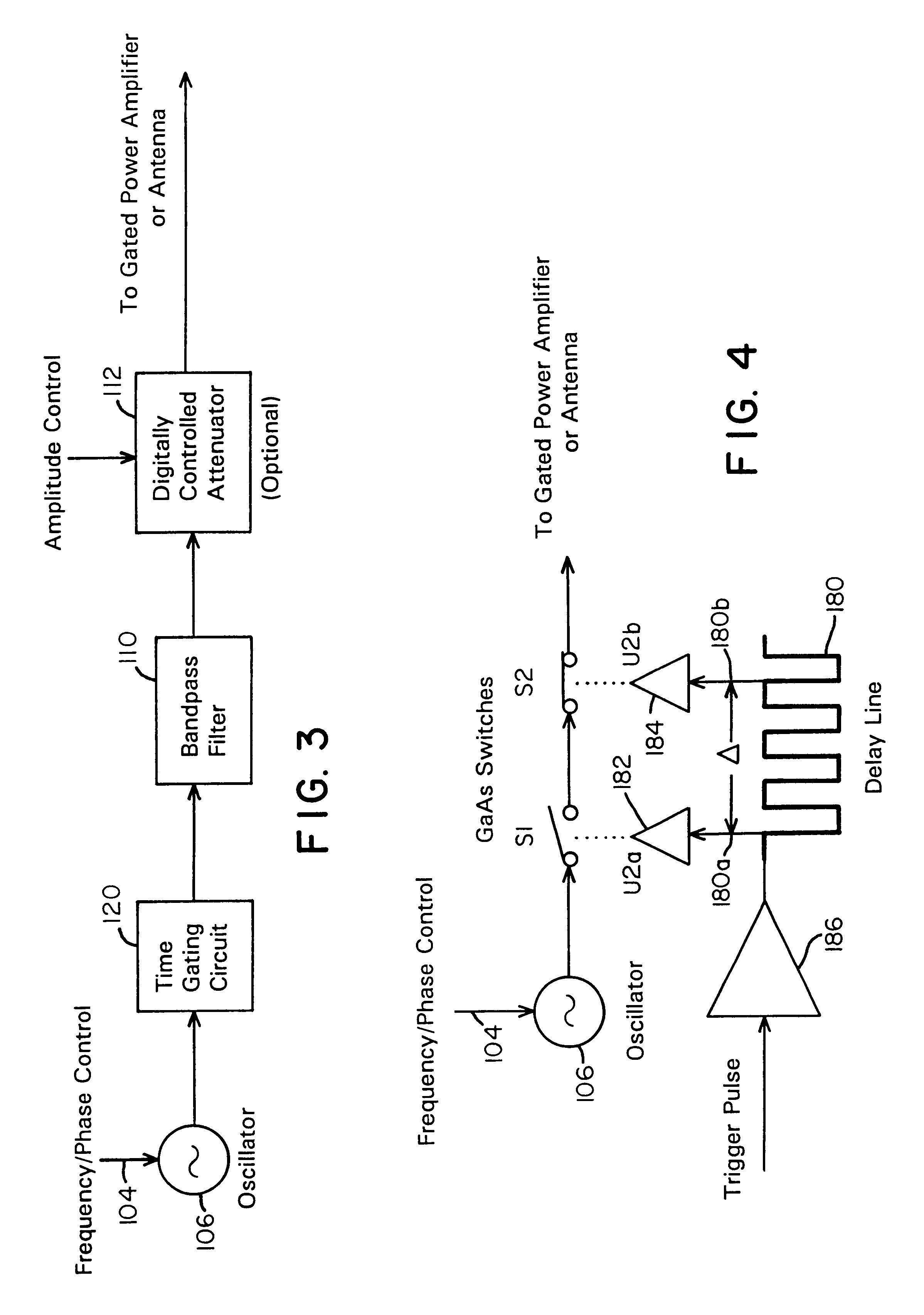Ultra wideband data transmission system and method
a data transmission system and ultra wideband technology, applied in the field of ultrawideband communication systems, can solve the problems of limited output power and pulse repetition frequency (prf) of uwb impulse transmitters, and the inability to control frequency hopping or dynamic bandwidth
- Summary
- Abstract
- Description
- Claims
- Application Information
AI Technical Summary
Benefits of technology
Problems solved by technology
Method used
Image
Examples
Embodiment Construction
Without limitation of the invention, two classes of UWB transmitters which generate UWB signals having controllable spectral characteristics according to the present invention will be described. The first class of UWB transmitters include an impulse-gated oscillator (and the special case in which the oscillator frequency is precisely zero), and the second class includes a time-gated oscillator in which time-gating circuitry approximates the response of a low-level impulse.
Microwave components of the present invention may be built to operate into 50 ohms to obtain maximum power transfer, to make use of readily available radio frequency (RF) components, and to provide a readily manufacturable design using conventional microstrip or stripline circuitry.
Class I: Impulse-gated Oscillator (IGO) UWB Transmitters
FIG. 1 shows an UWB transmitter in which a low-level impulse is used to gate an oscillator to produce an UWB output.
Low-level impulse generator 100 excites an optional bandpass or p...
PUM
 Login to View More
Login to View More Abstract
Description
Claims
Application Information
 Login to View More
Login to View More - R&D
- Intellectual Property
- Life Sciences
- Materials
- Tech Scout
- Unparalleled Data Quality
- Higher Quality Content
- 60% Fewer Hallucinations
Browse by: Latest US Patents, China's latest patents, Technical Efficacy Thesaurus, Application Domain, Technology Topic, Popular Technical Reports.
© 2025 PatSnap. All rights reserved.Legal|Privacy policy|Modern Slavery Act Transparency Statement|Sitemap|About US| Contact US: help@patsnap.com



